News
China is set to increase its nuclear power capacity
China is set to increase its nuclear power capacity
New nuclear power plant sites in China will have four automated reactors with the help of Invensys Process System (IPS), a global supplier to the nuclear industry. Through a contract worth approximately US$250 million, IPS has been tasked to develop and implement four large-scale, fully digitized nuclear control rooms for the Fuqing and Fangjiashan nuclear power projects. China’s partnership with IPS aims to reduce carbon dioxide emissions and the country’s reliance on coal-generated power by improving its current nuclear capacity. The two new nuclear power projects located in the provinces of Fuijan and Zhejiang will each have two 1GW plants, and the control rooms will be equipped with the latest simulation technologies, critical control and safety systems. A spokesperson for the evaluation committee said, “During the evaluation process, IPS demonstrated global expertise that China can tap into as we accelerate our technology transfer program. IPS also has technologically advanced integrated solutions capabilities, as well as proven implementation methodologies and processes. In summary, they ranked high in all the key factors we look for in a long-term strategic technology partner. As China speeds up nuclear power expansion and increases clean energy capabilities, we are confident that IPS will continue to provide the world-class automation solutions and expertise that will allow us to optimize these systems and make them safer.”
Japan and the UAE join hands for peaceful nuclear energy
Japan has signed a memorandum with the UAE to cooperate in the field of peaceful atomic energy. Takamori Yoshikawa, Japan's senior vice-minister of Economy, Trade and Industry, and the UAE Foreign Minister's undersecretary Saif Sultan Al Aryani signed the cooperation agreement that is geared towards preparing and planning a peaceful nuclear programme. Focal points of the memorandum of cooperation include human resources training, handling nuclear hazard emergencies, social awareness, infrastructure, safety and nuclear radiation protection. Technical and services assistance, seminars, workshops and exchange visits between Japan and the UAE are also underway under the signed cooperation agreement.
Siemens “Huaneng Yuhuan Power Plant” bags Asian Power Plant of the Year
Here are the winners:
The 2008 Asian Power Awards pay homage to the power generation industry's best and brightest
The 2008 Asian Power Awards pay homage to the power generation industry's best and brightest
Taipower's renewable energy
Q1. When did Taipower enter its first foray into renewables and what was behind the decision to invest in renewables?
Invensys lands major power contract in Saudi Arabia
Invensys Process Systems has won a substantial contract from the Saudi Electricity Company (SEC) to provide plant performance and monitoring solutions for use on one of the country's most critical power plants.
Uranium's going nuclear
The uranium industry's worst year is about to collide with a nuclear construction program in India and China that rivals the ones undertaken during the oil crisis of the 1970s.
The biggest surprise to emerge from the Chinese earthquake may be Dongfang Electric Corp.
China's second-biggest power-plant builder fell 27 percent to a 16-month low after the 7.9-magnitude quake in Sichuan province on May 12 flattened a Dongfang factory and killed 500 of its workers. Since the disaster, the company has received 10 billion yuan ($1.45 billion) of new contracts for wind turbines and other generation equipment, investor-relations manager Liu Zhi said.
Restoring power after China’s earthquake
Immediately after the devastating earthquake struck China on May 12, the country's State Electricity Regulatory Commission (SERC) activated their highest emergency response systems to respond to the disaster. SERC assured everyone affected that they, and many other Chinese relief agencies, would employ maximum efforts to restore power disrupted by the 7.8 magnitude earthquake that hit China's Sichuan Province. The earthquake severely damaged power facilities in Sichuan, Gansu and Shaanxi.
Tenaga’s Net Income Falls
With coal prices more than doubling in the past twelve months, it was only a matter of time that surging prices would push some producers into losses.
Asia's miners see the benefits of power rentals in meeting demand
The rapidly developing economies of Asia are fuelling a constant need for fresh supplies of power to cure the energy shortfall problems being faced by utilities and all forms of industry and large building projects. This increasing need for power in Asia is being driven by industrial growth and people's improving living standards. These urgent demands for power mean that the power users and producers are being faced with critical decisions about what power generation solutions will satisfy their energy demands. Before the required power can be supplied, the utilities and companies must make their mind up as to what kind of power system will generate the much needed power capacity. Various factors come into play when deciding upon the ideal solution to the problem of providing power. These decisive factors include the amount of power needed and duration it will be needed for, and the operating and financial aspects of the process. Then there is the final choice between purchasing a power system or renting one from a specialist supplier. The critical decision between renting or buying a power system will depend largely upon the urgency of the problem being faced and the length of time that the power solution will be needed. Purchasing power generating equipment may at first seem to be the preferred option, however, consideration should be given to power rentals as they can often provide the most effective use of working capital, especially when ‘fast-track' power supply solutions are included into the equation. There is no simple answer to the rentals verses purchase debate as each power supply problem will have its own tailor-made solution. The right power supply system needed by a project is defined by the requirements of the project in question. In some cases the right option is immediately obvious, for instance if the need for power is clearly temporary, as in an emergency, then rental is the obvious choice as the power can be supplied rapidly for as long as it is needed. However, renting power equipment for large and small projects is becoming popular in various industries as it represents quick delivery and avoids the need for large capital expenditure. In cost terms, the financial benefits of a temporary rental solution are that the system's regular and predictable costs are factored into the business plan of the project in hand. Then, when the project is finished, there is no need for the user to arrange for the removal and storage of the power equipment as this is carried out by the rental company. The benefits of power rentals There are many features that make the proposition of power rental attractive, including improved cash flow and speed of supply. There are no down payments for a loan for purchase purposes and power rentals have a guaranteed payments schedule over the agreed term, with options to extend the rental period if required. Also, the rental option provides the end user with operational and maintenance services of the rental package. When a company rents power supply equipment, its management team simply transfers the uncertainties and risks of power equipment ownership to the power rental company. This process allows the company to concentrate on its core business knowing they can rely on continuous supplies of power from the rented equipment. If required, the solution can be tailored to meet specific needs and should these needs then change, the equipment or the period of rental can be adjusted to suit the new demands. One of the most frequent reasons for choosing a rental solution is timing as a power rental is often a fast-track supply, thereby giving the end user the vital power supplies needed within a short time. This fast delivery is critical to many users especially if there has been an unplanned power outage and reliable power is of paramount importance. Then there are the long lead times before a purchased power plant can be delivered; it can be 18 months or even two years before the new power plant is "in-power". It as at times like these when power rentals are the answer. Another benefit of renting power equipment is the flexibility it offers as rentals allow the customer the freedom to increase or decrease the amount of power generating capacity according to need. An additional advantage is the extensive range of technical support services provided by the rental company which ranges from advice and design through to replacing faulty equipment and even operating and maintaining the equipment. The recent popularity and growth of temporary power has resulted in companies planning for temporary power for their first production phases rather than waiting until they experience a power shortfall problem. To make sure that reliable power will be available when needed, early planning ensures that the temporary power system provides the power required. Many factors must be considered including operational logistics regarding location and ambient temperatures. Planning ahead makes certain that quality power is available when needed. Fast track power for a Chinese mine A copper mine, located in China's south western province of Yunnan, needed quality power urgently so that it could increase the mine's production levels and expand its operations. The mine's existing power supply was insufficient for the much needed increases in production and the planned expansion of the mine. The mine, owned by Yunnan Simao Shanshui Copper Company Limited and the Hong Kong based Pacific Group, is located in a remote and elevated region of Yunnan Province. The mine had used power supplied from the grid but power is weak and often cuts out which causes significant losses in production. The owners of the mine had wanted to optimise operations for some time by improving overall performance and by expanding the operations. However, the lack of reliable supplies of quality power had delayed their plans as the mine's equipment cannot be effectively utilised. The mine company had even purchased new mining equipment which had been delivered to the mine but remained unutilised due to the lack of good clean power. The mine's management awarded a contract to the power rentals company, Aggreko for a 9 Megawatt temporary power plant. The power equipment had to be delivered in an extremely short time frame so that increases in production could commence as quickly as possible. The contract stated that Phase 1 of the power plant must be delivered and ‘in-power' within three weeks from the date of contract signature. Phase two was to be delivered and ‘in-power' shortly after the commissioning of Phase 1. Whilst the speed of delivery, considering the remoteness of the mine plus the condition of some of the roads that the trucks had to negotiate is impressive, the time taken for engineering and commissioning is more so. From the delivery of the power equipment to the remote mine through to commissioning, the team from Aggreko enabled the generation of quality power within four days. Vital power for a mine in Mongolia With mineral prices at an all time high, mine owners are keen to extract maximum value from the ground. To do this they need power - but for remote mines, such as Ivanhoe Mine's Oyu Tolgoi project developed in Mongolia's Gobi Desert, power is almost as precious a commodity as the metal their new mine will be digging from the ground. Without ready access to a power grid, and with existing power equipment already running at full load, Ivanhoe Mines chose to install a temporary power plant to supply a constant 4 Megawatt which enabled the sinking of a new exploration shaft without interrupting other mine development operations. The contract was handled by Aggreko's Houston, Texas, sales office, whilst its Singapore hub was chosen to manage the project as it was the closest operational centre to the Oyu Tolgoi site. The complete turnkey package consisted of six 1,250kVA generators, one 6.3MVA transformer, a 20,000 - litre fuel tank, two neutral earth resistors, a control room and Aggreko's spares container, with enough spares to maintain operations in the remote location for the duration of the contract. The equipment shipment was delivered from Aggreko's Singapore base via ship to China where it was off loaded to be transported by train to the border between China and Mongolia. Upon arrival at the border the consignment had to be transferred to a Mongolian train as the gauge of the Mongolian railway system is different from the Chinese rail system. Upon reaching Ulaanbaatar the equipment was then transferred to trucks for the 540Km journey on unpaved roads from Ulaanbaatar to the Oyu Tolgoi mine. Once the trucks had completed their arduous journey the plant equipment was unloaded for the site team and commissioning engineer to erect the plant. From start to finish including commissioning, the work was completed within six days. Growth in Asia's rentals sector In recent years, the specialist power rental company Aggreko has seen their rentals business increase significantly in Asia. During 2006, they opened their first depot for China in Hong Kong and in early 2007 they opened the first mainland depot in Shanghai. The team in China have already won a number of significant orders and expect to see business increase as companies in China learn more about the benefits of rental power. In another significant development for Aggreko's power rentals business growth, the company has recently signed an agreement with the Beijing Organising Committee of the Olympic Games (BOCOG) under which it was nominated "Exclusive Supplier for Temporary Power Generation" for the Beijing 2008 Olympic Games. Aggreko was the first British company to be named as an Exclusive Supplier of the 2008 Olympic Games. Power equipment rental offers a number of instant benefits to the client. Financial benefits include the release of capital for other core activities, a fixed price solution over a given term, the flexibility to increase or decrease the amount of equipment on hire at short notice, the elimination of labour plus the ordering and stocking costs normally associated with the maintenance of the plant. A rental solution also includes all the other added value services such as technical advice and installation and decommissioning, plus a high quality tweny-four hours a day seven day a week service and rapid response times. Power rentals provide significant support towards getting projects completed on time and within budget. The services that a capable power rental company, such as Aggreko, offers are not just about power generation; they are more to do with a total energy supply solution. From technical advice and design through installation and commissioning to operating and maintaining the power system they will be providing the right solutions to the customer.
Walking The Fine Atomic Line
As one of the world's foremost users of electricity, Japan has a huge burden to carry when it comes to power generation. Logically, it seems that the best way to satisfy this need is nuclear energy. It's relatively clean, efficient, and totally in sync with Japan's meticulously high-tech national character. However, recent events involving repeated safety shutdowns have been leaving power-watchers sceptical about Japan's nuclear future. Japan has been harnessing nuclear power since 1966. At present, there are 55 nuclear plants providing approximately 30% of the country's electricity, and this number is expected to rise up to 40% by 2017.
No borders for Vietnam's power needs
With a rapid economic growth (GDP projected to grow at about 8 to 9 percent during 2006-2010), the power demand in Vietnam is forecast to grow at an average of 16 percent per year during the next five years. During the January 2008 to May 2008 period, the national consumption surged by 19 percent, with the southern region (home to the country's industrial hub), jumping 28 percent, up from an average growth of nearly 14 percent in the same period of 2007.
China's power generation shares in trouble
Skyrocketing coal prices and the Chinese government's decision to cap electricity tariffs have China's power generation companies' shares dropping left and right. And some analysts think it's going to get worse before it gets any better.
Delhi pioneers distribution reform
Last month we examined what ails the distribution segment of the electricity business in India and the challenges facing the Distribution Companies (Discoms, in common parlance). Over the past two decades India has been struggling to reform the distribution sector managed by more than a hundred utilities in 35 States and Territories. Electricity is a concurrent subject in India which means although there are federal laws, States are empowered to enact their own amendments to the basic laws. Thus several States passed their own legislation and tried out different models for privatising and restructuring. Some models yielded less than desired results and some others were spectacular failures driving the sector into even deeper crisis.
The Gathering in Goa
The "9th Regulators and Policy Maker Retreat" at the Hotel Marriot Resort in Goa was an astonishing event. Organised by the IPPAI (Independent Power producers Association of India), endorsed and supported by the IPPF, this was beyond the intimate compact gathering implied by the word "Retreat". It was a full blown conference of major proportions incorporating key themes of vital importance. Subtitled "Pan-Asian Perspective on Regulatory Convergence Across Key Infrastructure Sectors". Under this cross-sector banner, the IPPAI's Goa conference drew an amazing array of top experts from three key sectors: power, oil & gas, energy, etc., telecommunications and aviation.
China looks beyond coal to fuel its dragon economy's fire
Over the last two decades, China’s unprecedented economic growth has led to rapid growth in electricity demand. Supply has not always kept pace with demand growth. Power shortages occurred frequently during 2002-2005, notably in the high economic growth regions, such as the provinces of Shanghai, Jiangsu, Fujian, Anhui and Guangdong. A return to a more balanced supply and demand situation was achieved in most regions in 2006 and continued into 2007, as capacity expanded by approximately 200 GW over the last two years. A few regions still face potential shortages, due to transmission constraints or severe weather conditions.
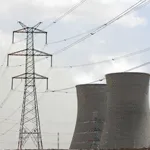


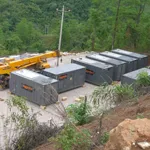

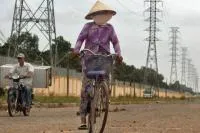
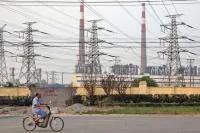
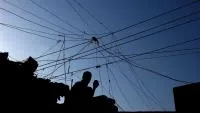
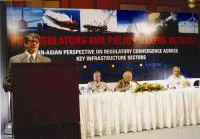
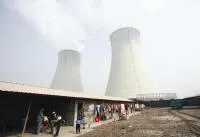

 Advertise
Advertise










